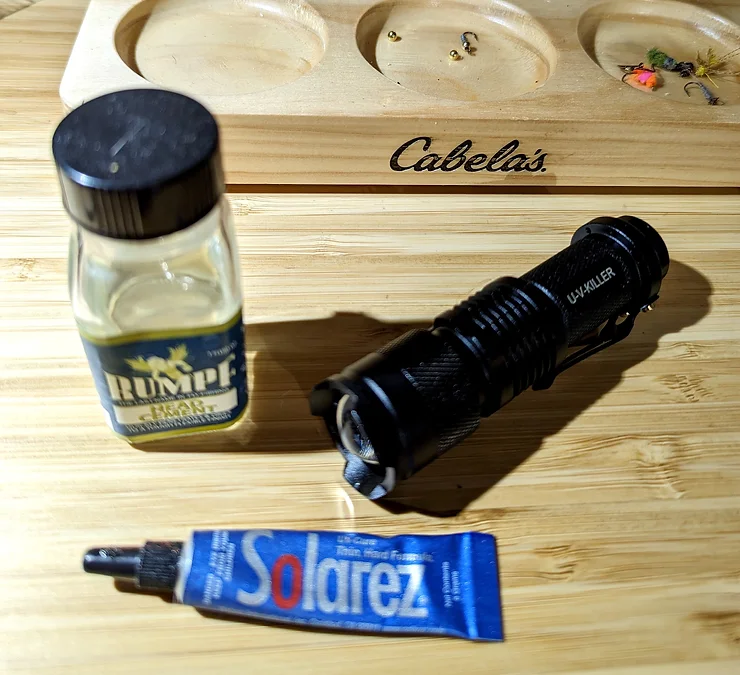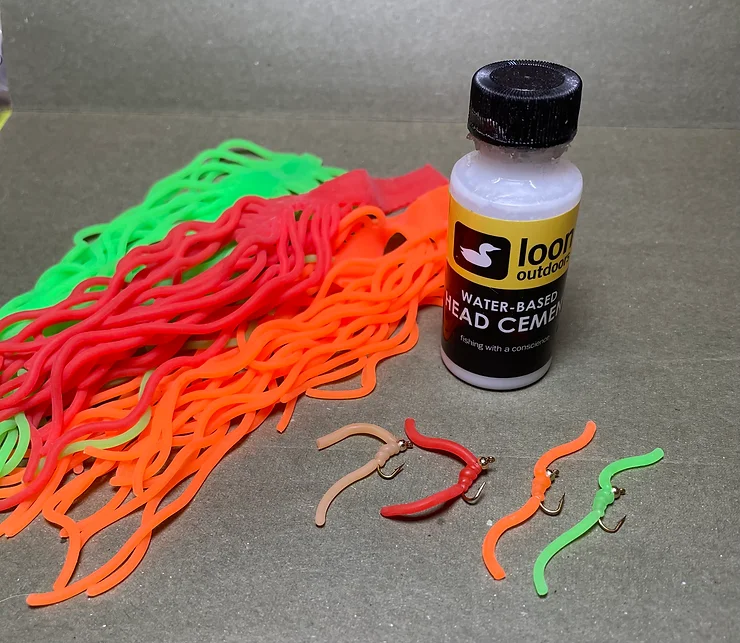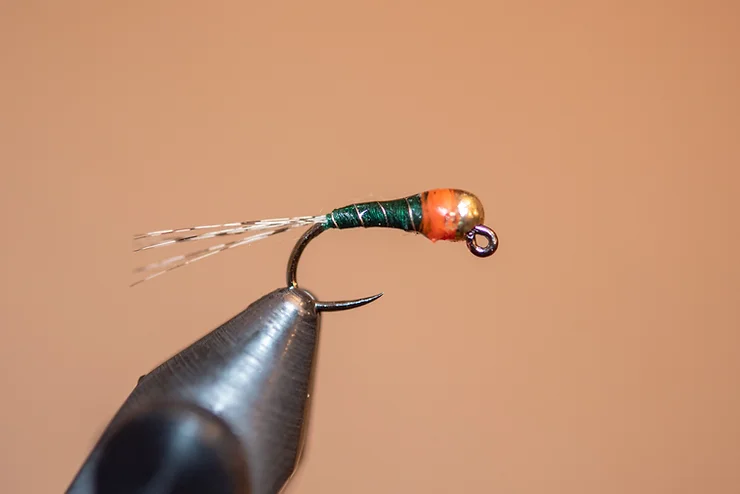Fly Tying: Which Head Cement Should I Use?

A fly fishing buddy said aloud; “that’s a hard head,” and I was flattered! His comment was not directed toward me, but rather the fly I handed him. Head cement is one of those incidental components that is often taken for granted, but perhaps it shouldn’t be.
Why is quality head cement important when finishing a fly? Quality head cement dries hard and seals the thread’s knot to ensure it does not unravel, even when scraping sharp stones and, hopefully, a fish’s teeth. Some may argue that super glue is also a good option, and it can be, but it’s also a lot more expensive overall and a whole lot messier. In almost all aspects, head cement is the best option for finishing flies.
A quality head cement can prolong the life of a fly, which is why experienced fly tyers never skip this step. Many novice tyers believe that any glue will do the job of finishing a fly, but not all glues are created equal. It takes a quality head cement to harden completely, not weaken over time, and withstand being repeatedly introduced to water. Fortunately, most brand of head cement sold through various fly tying supply dealers will do the job, but cheaper brands do tend to dry out faster (they thicken) and have a shorter shelf life.
Most head cements are lacquer based. If they do get really thick from lack of use, add a little bit of lacquer thinner to them and shake it up well. This will prolong the shelf life of most head cements.
For larger flies, such as streamers, and other patterns with a larger thread head, try Hard Head. Unlike head cement, which soaks into the threads and seals the knot, Hard Head actually coats the threads and will provide a nice, glossy head on streamer patterns.
Lacquer-based head cements will work well for just about any material except silicone, such as the material used to tie Squirmy Wormies and a multitude of variations. When dealing with sensitive materials such as silicone, use a water-based head cement to finish the head of the fly. Water-based head cement will not deteriorate the silicone material.

For years, I successfully used a popular brand of tyer’s cement. I would dip a needle into it before dabbing the head and then wait for it to dry before removing the imitation from the vice. Unfortunately, it sometimes dripped onto my tying bench or flowed into a hook’s eyelet. Not long ago, I found a set of three “tubes” of a different type of resin. The tubes were labeled “thin”, “medium”, and “thick”. With interest piqued, I learned they were activated by UV light, which caused them to harden within 15 seconds. Deciding to give them a try, I learned the medium and thick formulas offered reduced dripping incidences and fewer problems flowing into the eyelets. It dries rock hard 15 seconds after being exposed to UV light. For very small flies, when all you need is a dab of resin to finish them, the thin formula works well.
Some fly shops sell expensive UV flashlights, but I discovered a less expensive unit is available from Atsko, Inc., a company that sells “UV Killer” laundry detergent to hunters. Hunters use the light to verify their clothing is not emitting UV light, which deer notice. If you’re looking for a budget-friendly option for a UV flashlight, try this light from Atsko, Inc. It works!

This glue also glistens when dry. I now dab the thorax area of some flies to add strength, and hopefully a fish-attracting sheen. And some patterns, such as Perdigons, require a body composed completely of these resins.
The moral of the story is to never take any fly tying materials for granted. Head cement can seem like an insignificant step in the fly tying process, but it’s a necessary step. Not only does it help seal the threads on the fly and make it more durable, but it can also be used to make your flies more appealing to trout, and I appreciate that.
Did You Find This Guide About Head Cement Helpful?
Stay up to date with the Dark Skies Fly Fishing monthly newsletter for free and receive the latest posts in fly fishing news, tricks, tips, and techniques, stream reports, as well as updates on new flies added to the Online Store and exclusive discounts!
Sign Up Now
I find myself using UV hardening cements increasingly. I am very pleased with how well my flies hold up, and I love adding a sheen or gloss to the thorax of many of my flies. I did not mention within this article (perhaps a future one) that the UV hardening cements do double duty to secure patches on leaky waders, and I mean in the best way possible. I am aware that many cements are designed specifically for that purpose, but I have yet to find any that hold up and seal as well as UV-activated cements.
If you don’t want to purchase a UV light, you may not want that added expense, though the obvious reply to that concern is that normal sunlight has UV rays that activate the cement On a cloudy day, the cement might need 30 seconds to harden instead of 15. But I cannot argue that a UV light is ideal for convenience.
If you pin me down, (and I get nothing for promoting them), the Solarez cements work well. I purchased a 3-pack that included thin, flexible, and thick. I use thin most often and the one that remains flexible after drying is perfect for sealing around patches on waders. The thick option works great for thorax building, it’s a bit more difficult to direct where I want it, and it causes problems if it drips into hook eyelets before it dries..
A word of caution regarding the Loon UV cured resins: Their dropper tips do not block UV light. What that means is that tying outdoors, like I often do in the summer, causes any residual resin in the tip to harden and plug up the tip. You would think the tip could be made of an UV blocking material, but this is not the case.
That’s a really good point, Leroy. Thank you for the input!
awesome